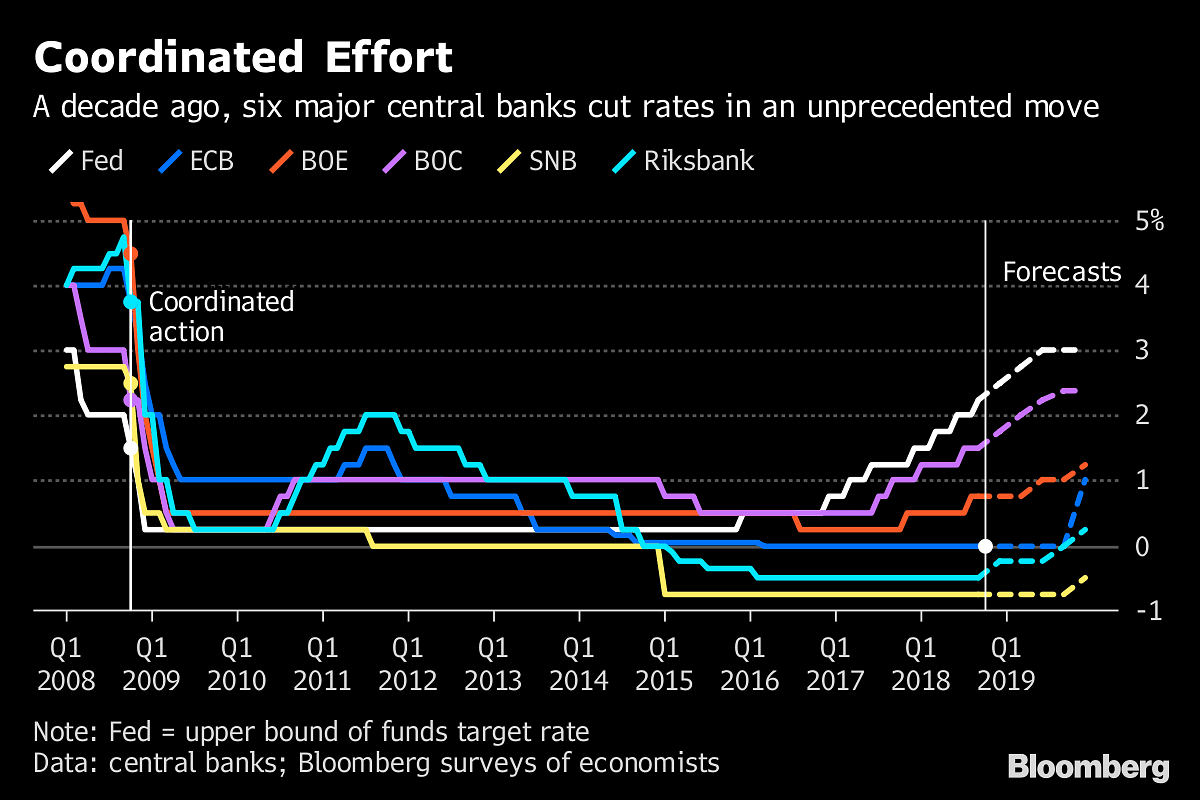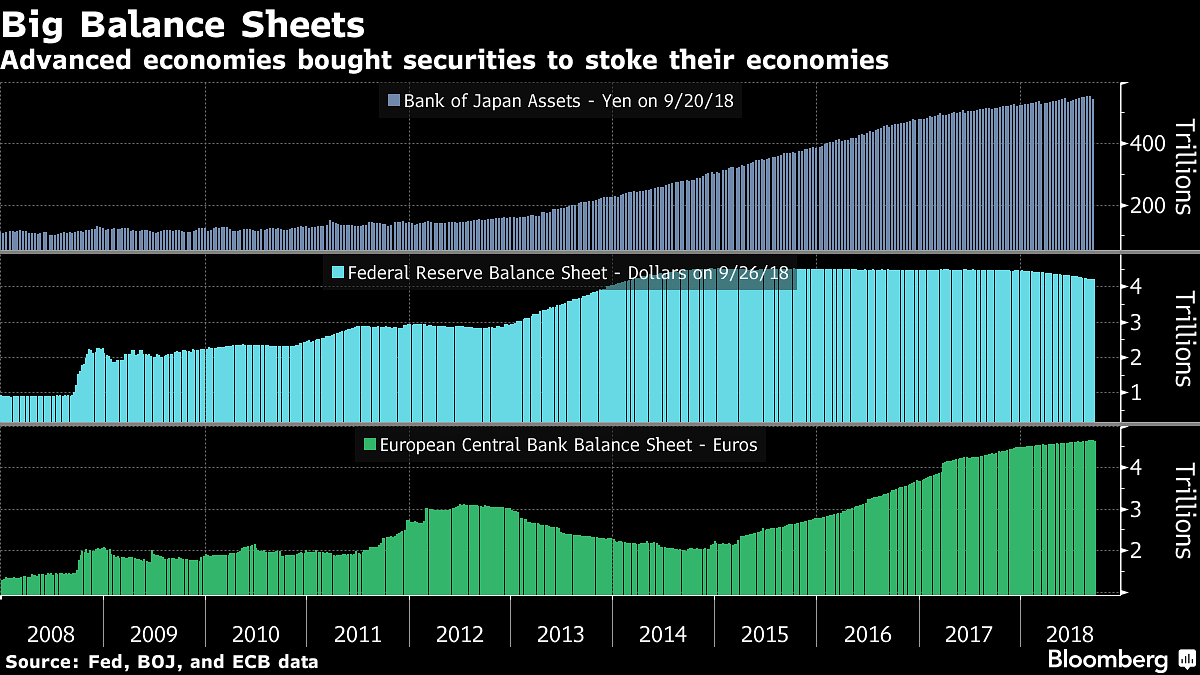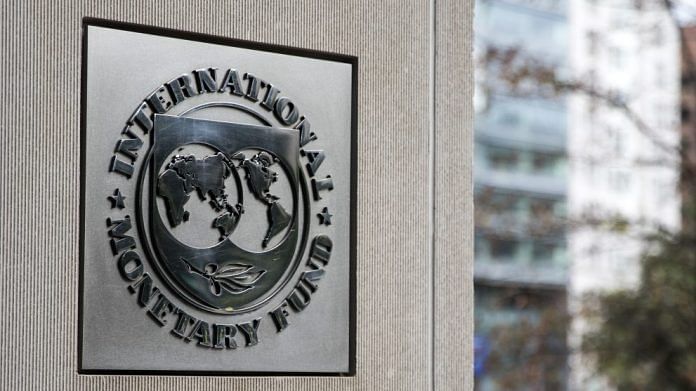Global finance chiefs meet for IMF & World Bank meetings without firepower of 2008 & with era of coordination looking like an anomaly.
Hong Kong: A decade after the guardians of the world economy united to save it from depression, the scope for such shock-and-awe policies has all but dried up.
It was ten years ago on Monday that the Federal Reserve and five fellow central banks banded together for a rare coordinated interest rate cut. They went on to deploy massive monetary stimulus as the global economy spiraled lower.

As global finance chiefs prepare to meet this week in the resort of Bali, Indonesia, for the annual International Monetary Fund and World Bank meetings, they do so without the firepower of 2008 and with the era of coordination looking like an anomaly.
Today, central banks still have historically low interest rates and are following different paths, while finance ministers are hamstrung by debt. Governments are also pushing nationalist, not globalist, agendas and grappling with headaches such as Brexit, trade wars, surging oil prices and volatile currencies.

“There are no arrows left in the economic quiver,” said Danny Blanchflower, a professor at Dartmouth College in New Hampshire who was a policy maker at the Bank of England in 2008. “Imagine it’s only as half a big a downturn next time, there’s still much fewer weapons to protect us.”
It was the U.S. central bank, under the leadership of Ben Bernanke, which took the lead in bringing the world’s monetary policy makers together to cut rates on Oct. 8, 2008.
Counterparts in the euro area, Canada, the U.K., Sweden and Switzerland also acted, while the Bank of Japan, which already had ultra-low rates, voiced support. The People’s Bank of China also eased borrowing costs and bank reserve requirements, though it didn’t tie its moves to those of the U.S.-led coalition.
All told, Bank of America Corp. calculates global central banks cut interest rates about 700 times and bought $12 trillion of financial assets since September 2008’s collapse of Lehman Brothers Holdings Inc. Global government debt surged about 75 percent to $67 trillion.
It’s hard to see such forceful and combined action happening today. For one thing, monetary policy lacks the scope it had. Even though the Fed is tightening policy, the average rate of developed countries only just passed 1 percent and will still be below its pre-crisis level a year from now, according to JP Morgan Chase & Co. The Fed’s balance sheet alone is still about 20 percent of gross domestic product.
Furthermore, the Fed and ECB are among those who faced political criticism for the actions. That may curb room for uniting across borders next time, said Nathan Sheets, who was director of the Fed’s division of international finance ten years ago.
“Maybe there would be more political scrutiny as to why are you allowing some other country to dictate your monetary policy,” said Sheets, who is now chief economist at PGIM Fixed Income.
Here’s a guide to what the world’s top central banks will do next
The political obstacles might prove particularly daunting when it comes to the Fed activating emergency swap lines to provide other central banks with dollars to dole out in a crisis. Those lines — in which the Fed swapped dollars for foreign currency — proved crucial in easing global liquidity strains a decade ago but were subsequently attacked by some Republican lawmakers as handouts to foreign banks.
“The Federal Reserve was the central bank of the world,” said former Fed official Edwin Truman, who is now a senior fellow at the Peterson Institute for International Economics in Washington. He said the Fed wouldn’t provide such levels of support today with the more nationalistic Donald Trump as president.
Fear of the future is one reason why some such as Blanchflower advise central banks to be wary of raising rates now. It would be better to guarantee an expansion is sustainable before pushing up rates, their argument goes.
Central bankers might still have to be more inventive next time around, embracing negative rates more wholeheartedly or mimicking Bank of Japan-style efforts to control bond yields. Joachim Fels, global economic adviser at Pacific Investment Management Co. in Newport Beach, California, sees the chance for “direct financing of fiscal stimulus (aka people’s QE).”
“Ideally policy makers will broaden their tool kits to fight the next crisis,” said Cui Li, head of macro research at CCB International Holdings Ltd. in Hong Kong. “But a coherent strategy doesn’t seem to be in sight.— Bloomberg




